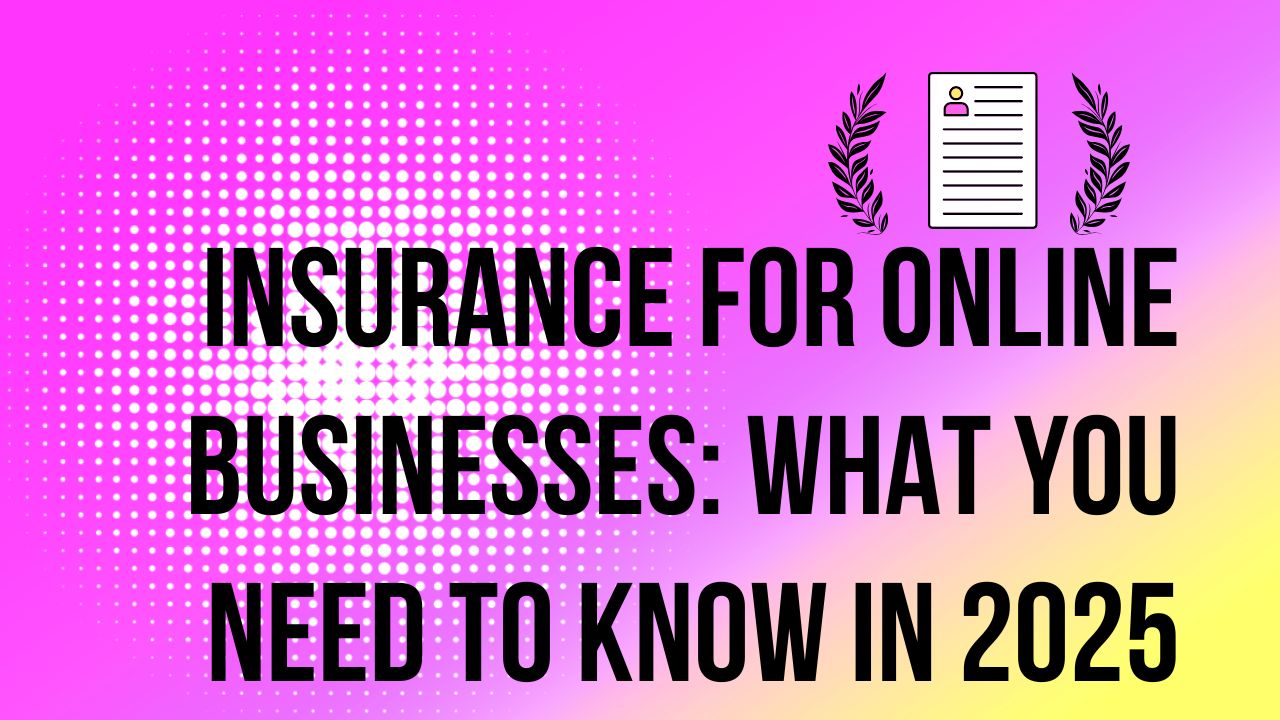Introduction
Running an online business in 2025 is easier than ever—but it’s also riskier. From data breaches to shipping problems, digital entrepreneurs face unique challenges. That’s why ecommerce business insurance is becoming essential for anyone who sells products or services online. In this guide, we’ll cover the types of insurance you need, how much it costs, and how to choose the right policy for your online store or brand.
Why Online Businesses Need Insurance
Many new ecommerce store owners believe insurance is only for physical shops. The truth is, online businesses are exposed to:
- Cyber attacks and data theft
- Customer injury claims from defective products
- Shipping damage or lost inventory
- Accusations of copyright or advertising violations
Without insurance, one lawsuit or claim could destroy your business overnight.
Types of Ecommerce Business Insurance
Let’s explore the most important insurance policies for online business owners:
1. General Liability Insurance
- What it covers: Bodily injury, property damage, and legal costs.
- Why it matters: Even if you sell online, you’re still liable for product-related issues.
- Best for: All online businesses, especially product sellers.
2. Product Liability Insurance
- What it covers: Harm caused by a product you sell (e.g., allergic reactions, defects).
- Why it matters: If someone sues your store over a faulty product, this protects you.
- Best for: Shopify, Etsy, or Amazon sellers.
3. Cyber Liability Insurance
- What it covers: Data breaches, ransomware, online fraud.
- Why it matters: Ecommerce sites store sensitive customer info like emails, addresses, and credit cards.
- Best for: Any business accepting online payments or storing customer data.
4. Commercial Property Insurance
- What it covers: Physical assets like inventory, equipment, or storage units.
- Why it matters: If you store stock at home or a warehouse, this helps replace it after theft or damage.
- Best for: Dropshippers and product-based online stores.
5. Business Interruption Insurance
- What it covers: Lost income due to disasters, outages, or cyberattacks.
- Why it matters: If your site goes down or your supply chain fails, this insurance covers the gap.
- Best for: Established ecommerce stores with steady revenue.
How Much Does Ecommerce Insurance Cost in 2025?
Prices depend on your business size, industry, and coverage level. Here’s a rough breakdown:
| Insurance Type | Estimated Monthly Cost (2025) |
|---|---|
| General Liability | $25–$60 |
| Product Liability | $40–$80 |
| Cyber Liability | $15–$40 |
| Property Insurance | $30–$70 |
| Business Interruption | $20–$50 |
Where to Get Ecommerce Business Insurance
Some of the best insurance providers for online businesses in 2025 include:
- Next Insurance – Fast quotes for digital entrepreneurs
- Hiscox – Great for small online stores and side hustlers
- Thimble – Flexible, pay-as-you-go policies
- Chubb – Ideal for scaling ecommerce brands
- Simply Business – Compare multiple providers in one place
Make sure to compare quotes and coverage before deciding.
Is Ecommerce Insurance Required by Law?
In most places, ecommerce insurance isn’t legally required—but platforms like Amazon, Walmart Marketplace, and Etsy now require sellers to show proof of liability coverage once they hit a certain sales volume. Having insurance also builds trust with customers and partners.
Final Thoughts
If you run an online business, ecommerce business insurance isn’t just a smart move—it’s essential. With the right policies in place, you can protect your assets, reputation, and future growth. Whether you’re just starting out or scaling fast, don’t wait for a disaster to realize the value of coverage.
